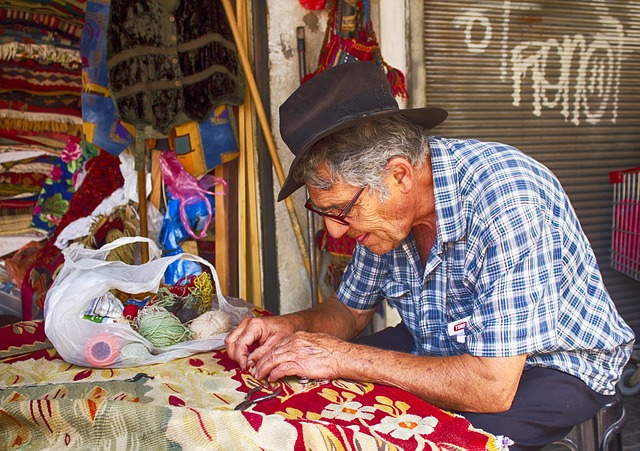
The gnarled appearances of the old or the elderly often strike a chord of senility, debility and bodily weaknesses. Over the course of the centuries, the Indian social structure and discourses of Indological aging offered concepts of Dharma, Karma and Sannyasa (other-worldliness) to locate the social and functional peripheries of the elderly. The spiritual strength of blessing or cursing by the elderly and the moral significations of caregiving by the adult children, often flowed interchangeably. Such forms of filial obligations and its parameters set across the social institutions sufficed as a shared arrangement between the elderly parents and their kins, running through their life-courses and the dynamic transformation of their bodies. Methodically, elderly caregiving has been the routine domestic duty affixing the respectability of ideal womanhood and the social roles of the daughter-in-laws. A further affirmation of it draws on the hegemonic-heteronormative principles of conjugal morality and gendered performances of care. Gradually recognising the unequal gender division of labour as a key barrier to women’s education, health and social empowerment in the post-independence period, a report titled ‘Towards Equality’ (Ministry of Education & Social Welfare, 1974) by the Committee on the Status of Women in India was presented in 1974. As a welfare and policy debate, this programmatic idiom sought to facilitate women’s socio-economic rights, protection against domestic abuse, opportunities for self-reliance, empowered agency and childcare facilities. The objectives of the Committee, however, could not address the covert diffusion of normative gendered behaviour and norms, upholding women to be the primary drivers of care, nurturance and moral labour. But, through the precipices of time and changing economic structures, the neo-liberal developmental models transformed care into a paid provenance. Now, the emotion and action of caring for the elderly sails through the complex of social systems, markets, paid agencies, capital and labour-power, yet hierarchising a novel class of ‘care workers’.
Care crosses across the life span of one’s physical evolution and social necessity. For an aged, receiving care might invoke fondness or mutuality on one hand while escalating ruminations of vulnerability on the other. Nevertheless, when it comes to navigating care, its sporadic and continuing figments twist to declare market dharma, intersecting but variable in quality from the moral dharma of yesteryears. This prompts us to question, how can we understand Dharma beyond its most uniform contingency? Even if the threshold of Dharma has always been about righteous regenerative functions, today, the spiritual fragments extract meanings much beyond the (in)tangible rootedness of life. In the Vedic Hindu philosophy, Dharma refers to the moral duties based on the experiences of knowledge, social situations and reflexivity while Karma, its rhythmic chain refers to the actions and its causality, i.e., following appropriate means for a ‘right’ end (Sharma, 2000). This end is however not linear of moral development in following the pre-given rules or passively passed through the generations. Instead, contemporary vectors of socio-economic functions communicates judgements on whether the Dharma of caring has transferred its supplements to the market filled with work-agents. This is where ideological and socio-economic organizations of neo-liberal normativity transfer caregiving responsibilities of the upper and middle-class Indian families’ women-wives to the paid care attendants, such as ayahs. The accountability of performing the Dharma of elderly care while sustaining markets of care is now in the hands of care attendants.
The outsourcing of socially reproductive works is generating a professional class of workers, i.e., the care workers who work within homes, take care of the elderly and socialise with them. Several institutional agencies are propping up to generate women’s employment in the labour market while making caregiving a feasible job search for women belonging to the marginalised groups. In a way, attendants perform two-way seva – moral and market seva. In Hinduism, seva refers to service, generally perpetuated from juniority to seniority while agencies utilize such ideologues to expand seva and dharma across the larger political, social, cultural and economic vistas. Market dharma and seva, as contemporary symbolic significations, are not mere courses of interdependency but also pose regularities as well as irregularities. For the care attendants, dharma and seva are interspersed with preparing for and readying oneself in the best clothes to reach the elder care-receivers’ home every morning. Such practices of the attendants form the embodied sensitivities of care-receivers, provide services to the agencies and feeds the mixed economy nearing capitalism, such as domination of private businesses. So, if care is a private and intimate relationality between the provider and taker, relics of neo-liberalism like private care agencies, circulates the ‘private’ ownership of care as a product (not too private now). So, the representation of dharma and seva in the contemporary era unfurls to be participatory and hierarchical among the different stakeholders of care economy.
Today, performances of market dharma and seva require the myriad existence and reciprocal shifts between an individual allotted for seva and their wider environment. An absurd truth lies in the way in which market has turned out to be a kin, more than in value to our blood or affinal kins. While the Hindu Dharmashastra and Vedas bestow the privilege, power and moral rights to sons and daughter-in-laws for the sustenance of the kul (the patrilocal family unit) including the elderly parents’ holistic care, social changes like decreasing son preference, nuclear family, both father and mother as chief providers, ambiguous familial arrangements, etc. are shifting the knowledge or work of care to be more materialised, exchangeable as well as de-centralised. Empirically involving myself in the research area of elderly care, a heart-warming interaction with Sriradha made me realize how the social role of the market and its territoriality precipitates in shaping aging, dharma and seva. The larger question probes, Whose Dharma and Seva? My interlocutor Sriradha, a daughter-in-law to her elderly mother-in-law, living in Kolkata, stated on her way to the office:
Who is a kin? My mother-in-law is paralysed since years. Everyone has their ‘hectic’ life as a reason. But I cannot leave her nor I can manage. During that time, the agencies helped me. I have seen these agencies growing in this community since the last 10 years. So, this neighbourhood is ‘adorer’ (lovable in Bangla) for me and the agency manager picks up my call, in need. I don’t want to shift anywhere else.
Sensing the crisis of her work and motives, Sriradha’s testimonies forward a complex paradox between – care as her dharma within a family (duty) and care as an import of dharma from the external agents. Today, lot of paid care agencies and home health check-up services functioning across the markets of Tier 1 cities like Kolkata and Bangalore, reflects such social realities. In other words, the residues of structural transformations cannot be envisaged from a simplistic assessment of breaking intergenerational familial ties, but in a way of understanding the micro-transitions of dharmic and seva principles throughout the life-courses of family members, care workers, agencies, markets and the state. One requires not the material blood body of his or her son to care for and perform the dharma for heavenly good. With a market economy now, the networks of socio-economic relationships are bulging from multiple endpoints for constituting elderly seva as a fabric of the society. This incites us to think, whether the market is only about capital exploitation and economic efficiency or performs community-oriented roles like human development, distribution of home care and regularity of seva through private bodies?
References
Ministry of Education & Social Welfare. (1974). Towards Equality: Report of The Committee On The Status Of Women in India. Government of India, New Delhi.
Sharma, A. (2000). Classical Indian thought. New Delhi : Oxford University Press.
Ahana Choudhury is a Research Scholar at the Department of Sociology, Tezpur University, Assam, India. Her research interest revolves around care work, ageing, migration and mobility as well as digital societies.











